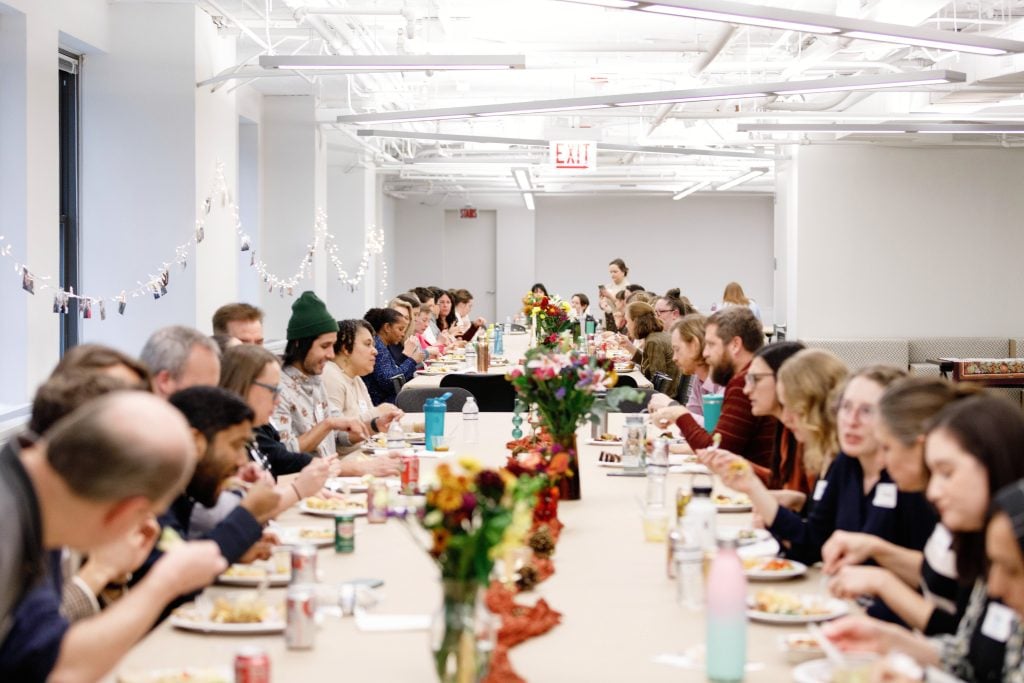In his book “Reviving the Golden Rule: How the Ancient Ethic of Neighbor Love Can Heal the World,” Andrew DeCort offers a fresh guide into the history of “love your neighbor” and how this movement can overcome othering today.
Where did “love your neighbor as yourself” come from? How has it changed our world, and why does it matter now? In this expansive book, Andrew DeCort unpacks the unfolding of what he calls “the neighbor love movement” across thousands of years. With powerful personal stories and inspiring examples drawn from history, DeCort invites us to advance this ancient movement today in the face of othering, dehumanization, and violence.
The following is an excerpt adapted from DeCort’s latest book “Reviving the Golden Rule.” ©2025 by Andrew DeCort. Used by permission of InterVarsity Press. www.ivpress.com.
Every Person, a Glimpse of God
The Bible begins with an astonishingly countercultural story. It claims that all people are made in God’s holy image. It reads,
Then God said, “Let us make humankind in our image, in our likeness, so that they may rule over the fish of the sea and the birds in the sky, over the livestock and all the wild animals, and over all the creatures that move along the ground.” So God created humankind in God’s own image, in the image of God he created them; male and female he created them. (Gen 1:2627 NIV altered)
The idea of the image of God was not new in the ancient cultures of Egypt and Mesopotamia. They saw their idols as the physical images and representatives of their gods on earth. On the social and political level, they sometimes saw their priests and kings as a god’s image, bearing its exalted status and authority to rule over others on the god’s behalf. Throughout, however, the image of god was exclusively reserved for powerful elites writes J. Richard Middleton in “The Liberating Image: The Imago Dei in Genesis 1.”
Genesis 1 dared to break away from this dominant imperial culture and told a new story in which idols and elites don’t image God. All people, including all women, image God. We are all made and marked by God to carry on the divine work of bringing presence, peace, and flourishing to the whole world. This preamble to the Bible is a groundbreaking vision of universal human dignity.
In this vision, if we want to see God, we don’t need to close our eyes in meditation, gaze upon idols, or bow before a priest or king. We need only to behold our neighbors. Each one is made in God’s image with God’s transcendent value and the creative responsibility to serve the world in all of its diversity. People are how God is primarily present on earth, even as the whole cosmos is celebrated as “very good” and suffused with primal blessing (Gen 1:31). Twelfth-century German mystic Hildegard of Bingen captured Genesis 1’s beautiful vision: “Every creature is a glittering, glistening mirror of divinity.” Here goodness is original, primal, sovereign.
This vision is why Genesis 9:6 condemns murder as an attack on God Godself, “for in the image of God has God made humankind” (NIV altered). Here, murder is not simply a violation of a human right. Murder is a violation of a divine right, God’s inviolable gift of life to all people.
Notice how radically different this is from the ancient myths of ancient Mesopotamia and Greece. In those stories, the gods were depicted as creating the world and humanity through brutal murder. They then established an othering order and mandated the enslavement of whole groups of people at the bottom of the hierarchy. By contrast, Genesis 1 envisions God making the world peacefully through God’s creative communication and condemns murder as a violation of God’s image embodied in all people, who bear equal value. In the beginning, creation is not a crime scene but a universal home in which all are beloved. God’s world-making communication invites us into “belonging without othering” as john powell and Stephen Menendian write in their book, “Belonging Without Othering: How We Save Ourselves and the World”.
The claim that one God created the whole world and all humanity in God’s image is a robust basis of moral universalism, the conviction that each and every person should be valued and treated equally without seeing others as unrelated or less than ourselves. It is the primal foundation of universal human rights and democratic governance. This moral circle encompasses and includes us all. According to ethicist David Gushee, this ancient biblical vision provides a foundation for human flourishing still today. It amounts to “the greatest moral contribution of the Christian tradition to world civilization.”
Read in its ancient context, then, Genesis 1 and its other-cherishing creation theology was a breakthrough in religion, ethics, culture, and politics. Rather than narrating warring gods ruling over othered factions of humanity, Genesis 1 invites us to see God as freely welcoming otherness and designing all people with sacred dignity and worldly responsibility. Each and every person is made in God’s image, without privilege or prejudice. In the beginning, everyone is a priest and king in God’s eyes. This is why Desmond Tutu wrote, “There are no ordinary people. . . . All, everyone, everything, belongs. None is an outsider, all are insiders, all belong.”
When we look at any other in any place at any time, we’re looking at a reflection of divine presence. We have never seen anyone who is not created by God – any other who is unrelated or less than ourselves. All belong. All are neighbors.”
Andrew DeCort (PhD, University of Chicago) is the author of “Reviving the Golden Rule: How the Ancient Ethic of Neighbor Love Can Heal the World” (IVP Academic, 2025) and “Blessed Are the Others: Jesus’ Way in a Violent World“ (BitterSweet Collective, 2024). He co-founded the Neighbor-Love Movement in Ethiopia, co-leads Prophetic: The Public Theology Fellowship, and writes the newsletter, “Stop & Think”.




